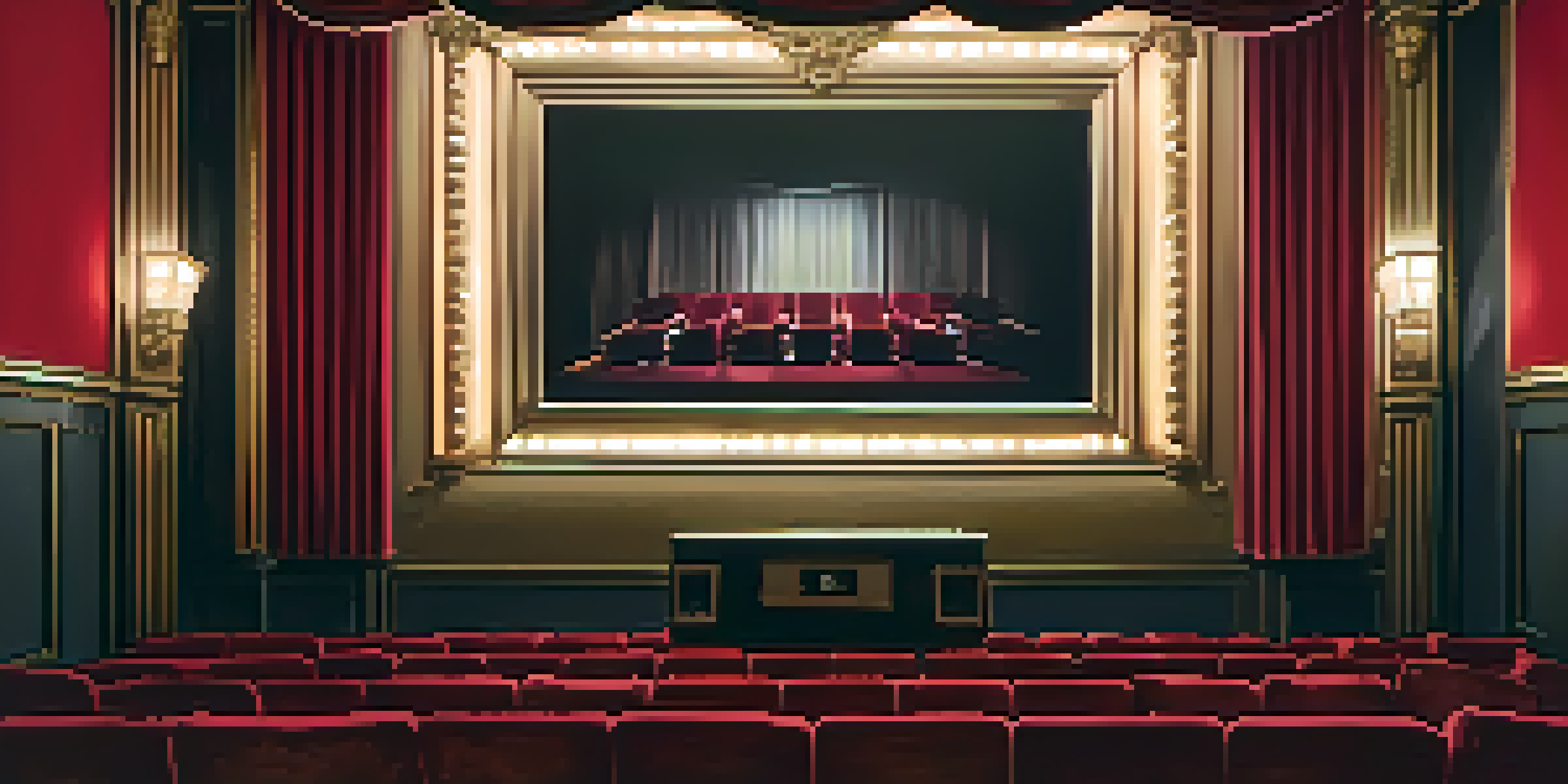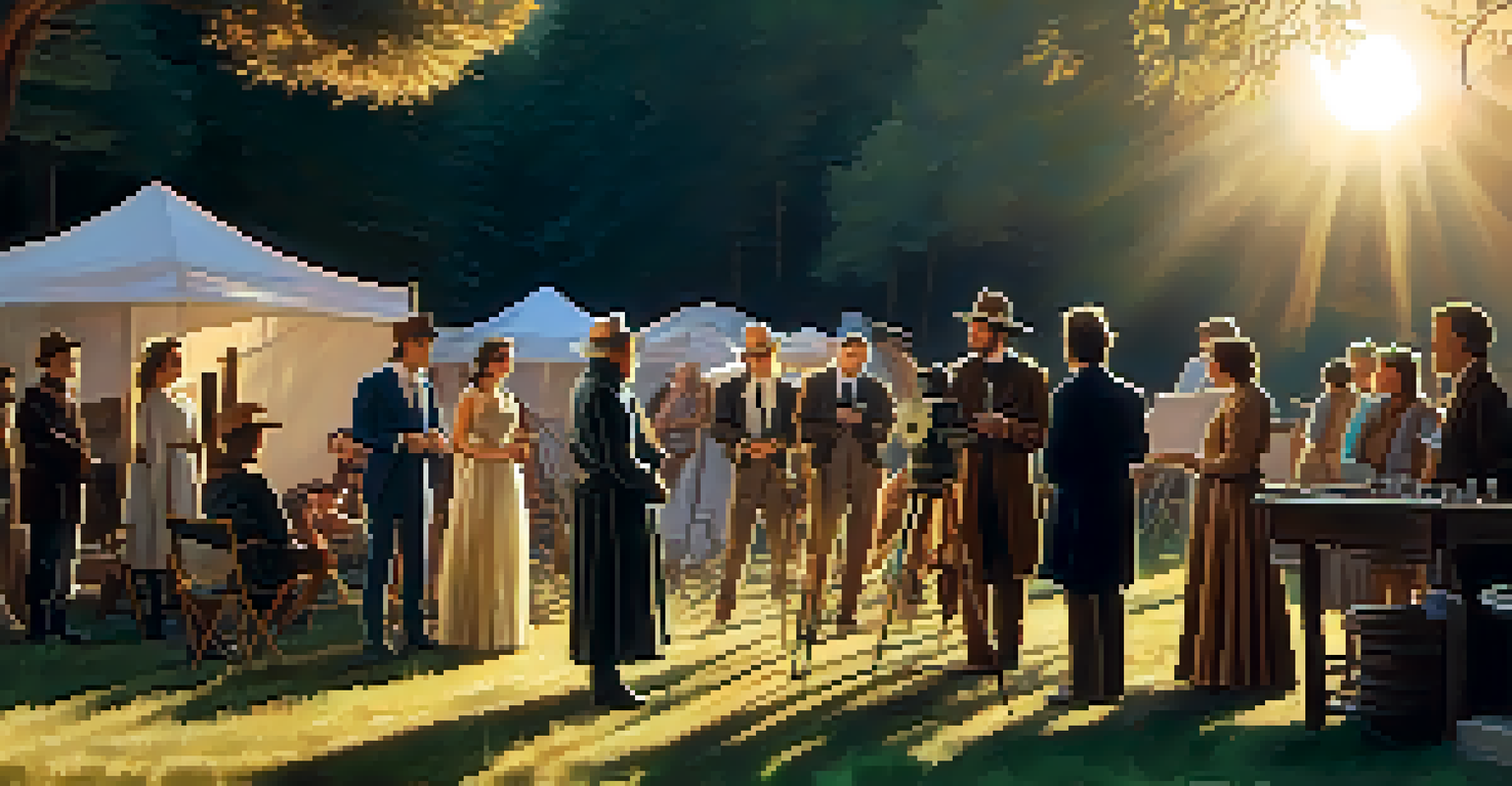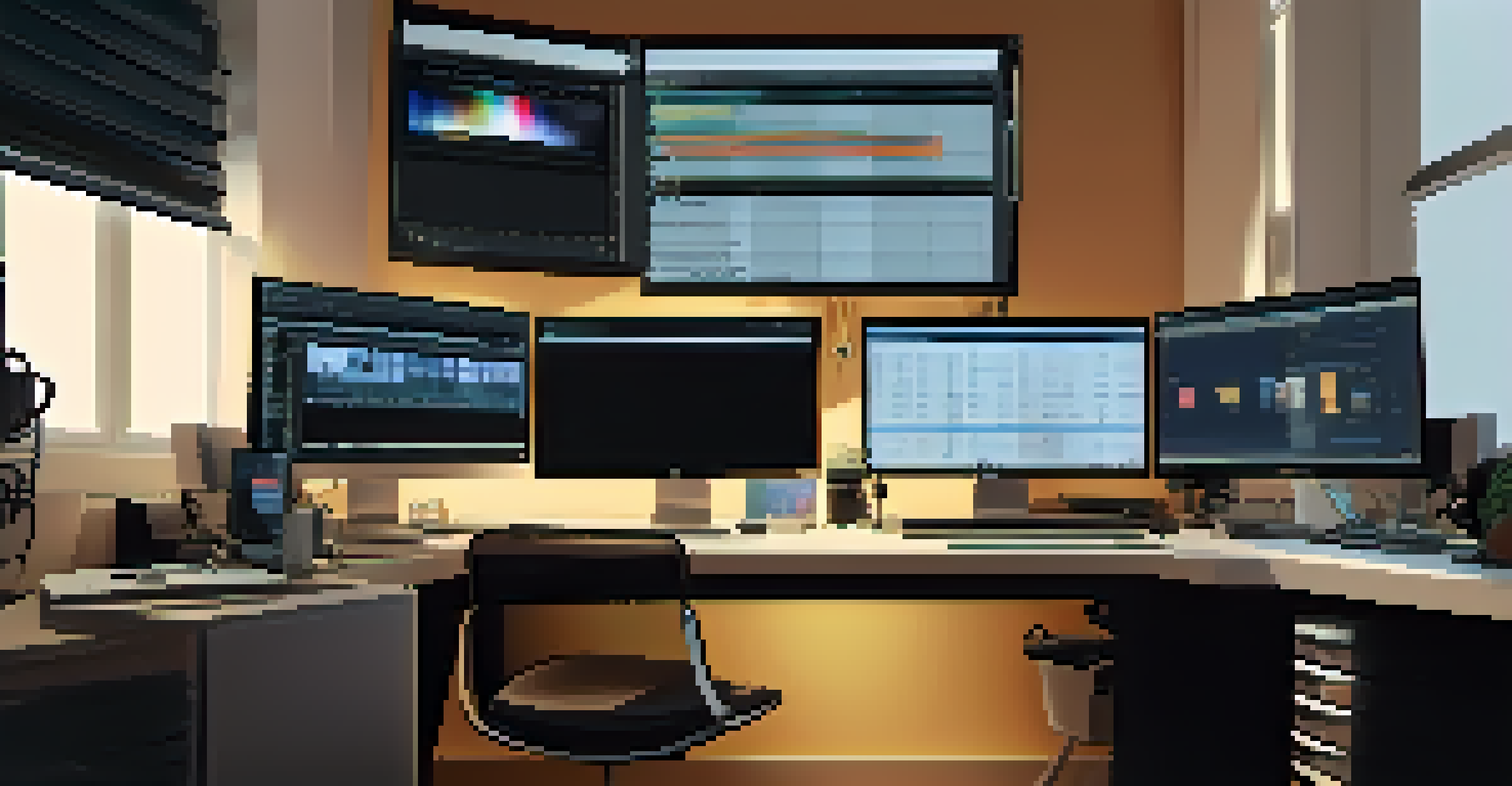Cinematic Techniques: Classic Films and Their Modern Adaptations

Understanding Cinematic Techniques in Film
Cinematic techniques are the tools filmmakers use to tell a story visually. From framing shots to using lighting, each element plays a crucial role in conveying emotion and narrative. Understanding these techniques helps us appreciate the artistry behind filmmaking, especially in classics that have stood the test of time.
Film is a powerful means of expression. It can shape the way we see the world and ourselves.
For instance, consider Alfred Hitchcock's use of suspenseful camera angles in 'Psycho.' The infamous shower scene, with its quick cuts and close-ups, builds tension that keeps viewers on the edge of their seats. This technique effectively immerses the audience in the psychological horror of the film, making it a masterclass in suspense.
Modern adaptations often pay homage to these techniques, sometimes reinterpreting them for contemporary audiences. By blending classic methods with modern storytelling, filmmakers can create a bridge between eras, allowing new viewers to experience the essence of the original while enjoying fresh perspectives.
The Power of Cinematography in Classic Films
Cinematography involves the art of capturing images on film, and it's a vital component of storytelling. Classic films like 'Casablanca' showcase stunning cinematography that enhances the emotional depth of the narrative. The use of shadow and light in key scenes not only adds to the visual appeal but also reflects the characters' inner turmoil.

Take the iconic scene of Rick and Ilsa at the airport; the lighting creates a poignant atmosphere that resonates with viewers. This careful attention to detail elevates the film from mere entertainment to an emotional experience. Such techniques are a testament to the filmmakers' vision and skill in crafting memorable moments.
Cinematic Techniques Enhance Storytelling
Filmmakers use various cinematic techniques like camera angles and lighting to convey emotions and enrich narratives.
In modern adaptations, cinematographers often draw inspiration from these classic techniques. By reimagining the visual style of beloved films, they create a sense of nostalgia while appealing to today's audience. This fusion of old and new demonstrates the enduring influence of classic cinematography.
Editing Techniques: From Classic Cuts to Modern Styles
Editing is where the magic of storytelling really happens, shaping the pace and rhythm of a film. In classic movies, editing techniques like continuity editing ensured smooth transitions, allowing audiences to follow the narrative effortlessly. For example, in 'The Godfather,' the seamless cuts between scenes enhance the film's dramatic impact, making it a timeless masterpiece.
A film is never really good unless the camera is an eye in the head of a poet.
Modern films, however, often experiment with editing styles that challenge traditional norms. Techniques like jump cuts and non-linear editing can create a sense of urgency or disorientation, reflecting the fast-paced world we live in. This evolution in editing showcases the filmmakers' willingness to push boundaries and redefine storytelling.
By analyzing both classic and modern editing techniques, we can appreciate how filmmakers adapt to changing audience preferences. Each generation brings new ideas to the table, ensuring that the art of editing continues to evolve while honoring the foundations laid by classic cinema.
Sound Design: Classic Techniques and Their Influence
Sound design is a crucial element that enhances the cinematic experience, often overlooked by casual viewers. Classic films like 'The Wizard of Oz' utilized innovative sound techniques to create a rich auditory landscape, from the iconic score to the whimsical sound effects. These elements work in harmony to transport audiences into the film's fantastical world.
In modern adaptations, sound design has evolved with technology, allowing for more immersive experiences. Filmmakers now use surround sound and intricate soundscapes to make audiences feel as if they are part of the story. This evolution showcases how sound has become a vital tool in storytelling, shaping emotional responses and enhancing narrative depth.
Evolution of Editing Styles
Editing has transformed from classic continuity techniques to modern, experimental styles that challenge traditional storytelling.
By exploring sound design in both classic and modern films, we see a clear progression in techniques and technology. However, the fundamental goal remains the same: to create an emotional connection with the audience, making each film experience memorable and impactful.
Narrative Structures: Classic Frameworks vs. Modern Twists
Narrative structure is the backbone of any film, guiding the story from beginning to end. Classic films often followed traditional structures, with a clear beginning, middle, and end. This approach allows audiences to easily follow the story and connect with the characters, as seen in classics like 'Gone with the Wind.'
In contrast, modern films frequently experiment with non-linear narratives and unconventional storytelling. Films like 'Pulp Fiction' break the mold, challenging viewers to piece together the plot from different timeframes and perspectives. This shift reflects a changing audience appetite for complexity and originality in storytelling.
By studying narrative structures in both classic and modern films, we gain insight into how storytelling evolves over time. Filmmakers continuously seek new ways to engage audiences, ensuring that the art of storytelling remains dynamic and relevant.
Character Development: Classic Archetypes and Modern Depth
Character development is essential for creating relatable and memorable protagonists. In classic films, characters often embody archetypes, representing universal traits and values. For example, the hero's journey in 'Star Wars' follows a familiar arc that resonates with audiences across generations, providing a sense of familiarity.
Modern adaptations, however, often delve deeper into character psychology, presenting more complex and flawed individuals. Films like 'The Dark Knight' explore the moral ambiguity of characters, showcasing their internal struggles and motivations. This shift reflects a growing interest in character authenticity and relatability.
Classic Films Influence Modern Cinema
Classic films have profoundly shaped modern filmmaking, inspiring new narratives and techniques while maintaining their cultural relevance.
By comparing character development in classic and modern films, we see a clear evolution in storytelling priorities. Today’s filmmakers strive to create characters that resonate on a personal level, moving beyond archetypes to craft narratives that reflect the complexities of real life.
Cultural Impact: Classic Films That Shaped Modern Cinema
Classic films have left an indelible mark on modern cinema, influencing countless filmmakers and shaping industry standards. Movies like 'Citizen Kane' revolutionized storytelling techniques, particularly in narrative structure and cinematography. Its innovative approach continues to inspire generations of filmmakers seeking to push creative boundaries.
Moreover, the themes and messages in classic films often resonate with contemporary audiences, making them relevant even today. For example, 'To Kill a Mockingbird' addresses social issues that remain pertinent, showcasing the power of storytelling to provoke thought and encourage change. This cultural impact underscores the timeless nature of classic cinema.

As modern filmmakers pay homage to these classics, they not only honor their legacy but also contribute to a continuous dialogue about storytelling. By recognizing the influence of classic films, we can appreciate the rich tapestry of cinema and its ability to evolve while remaining rooted in the past.